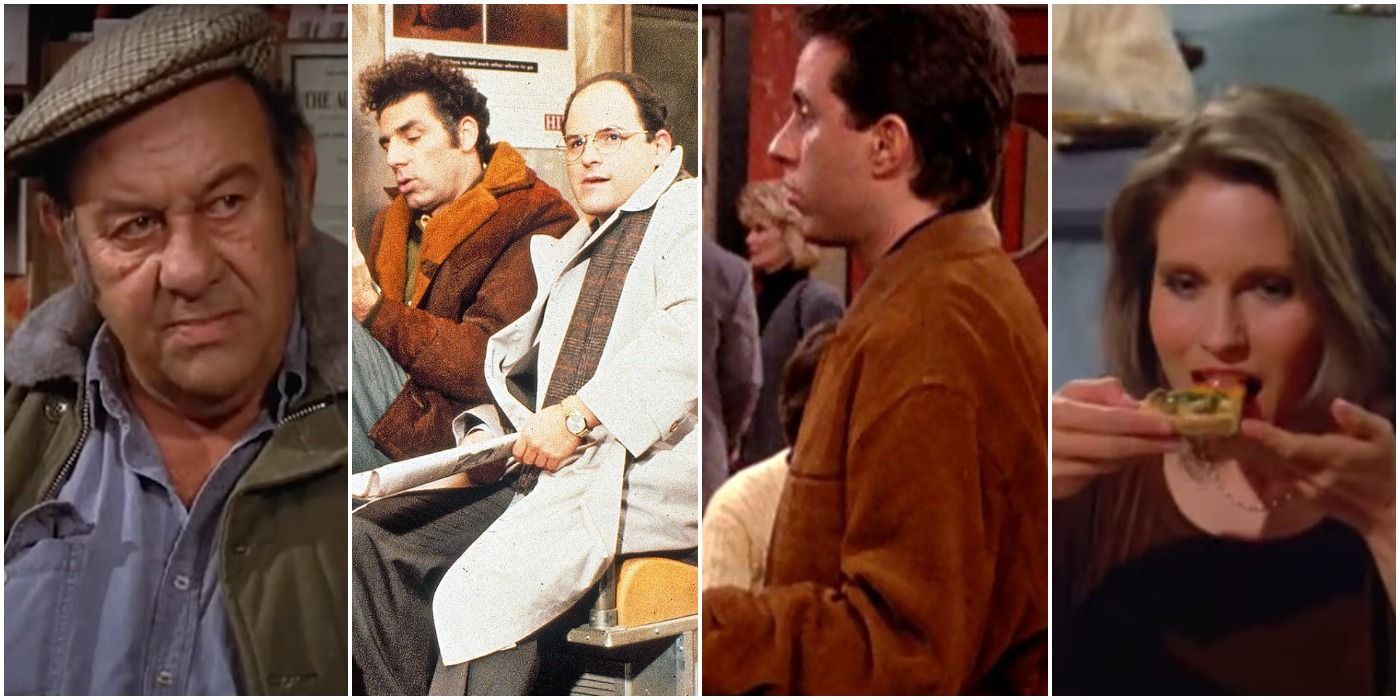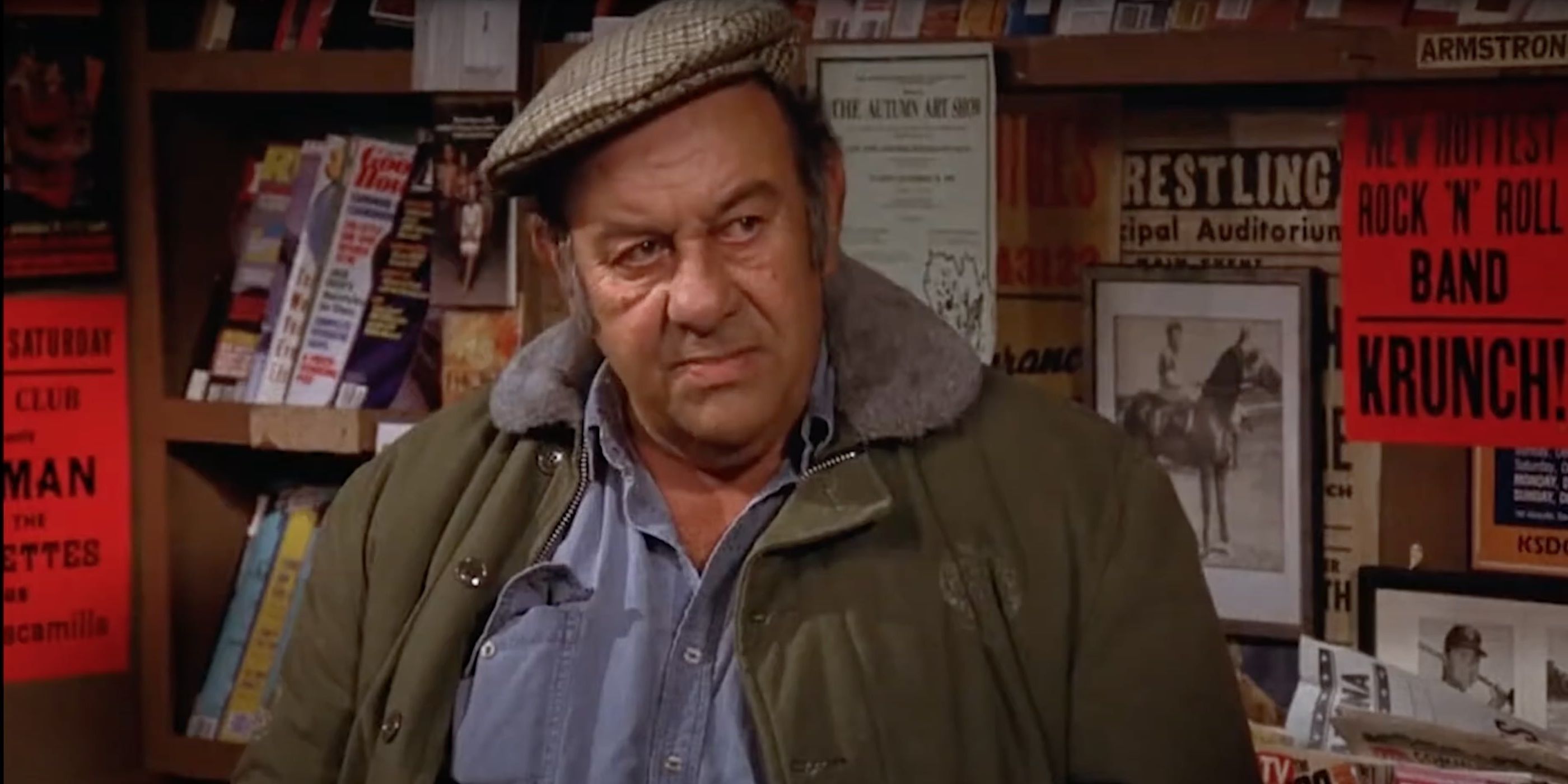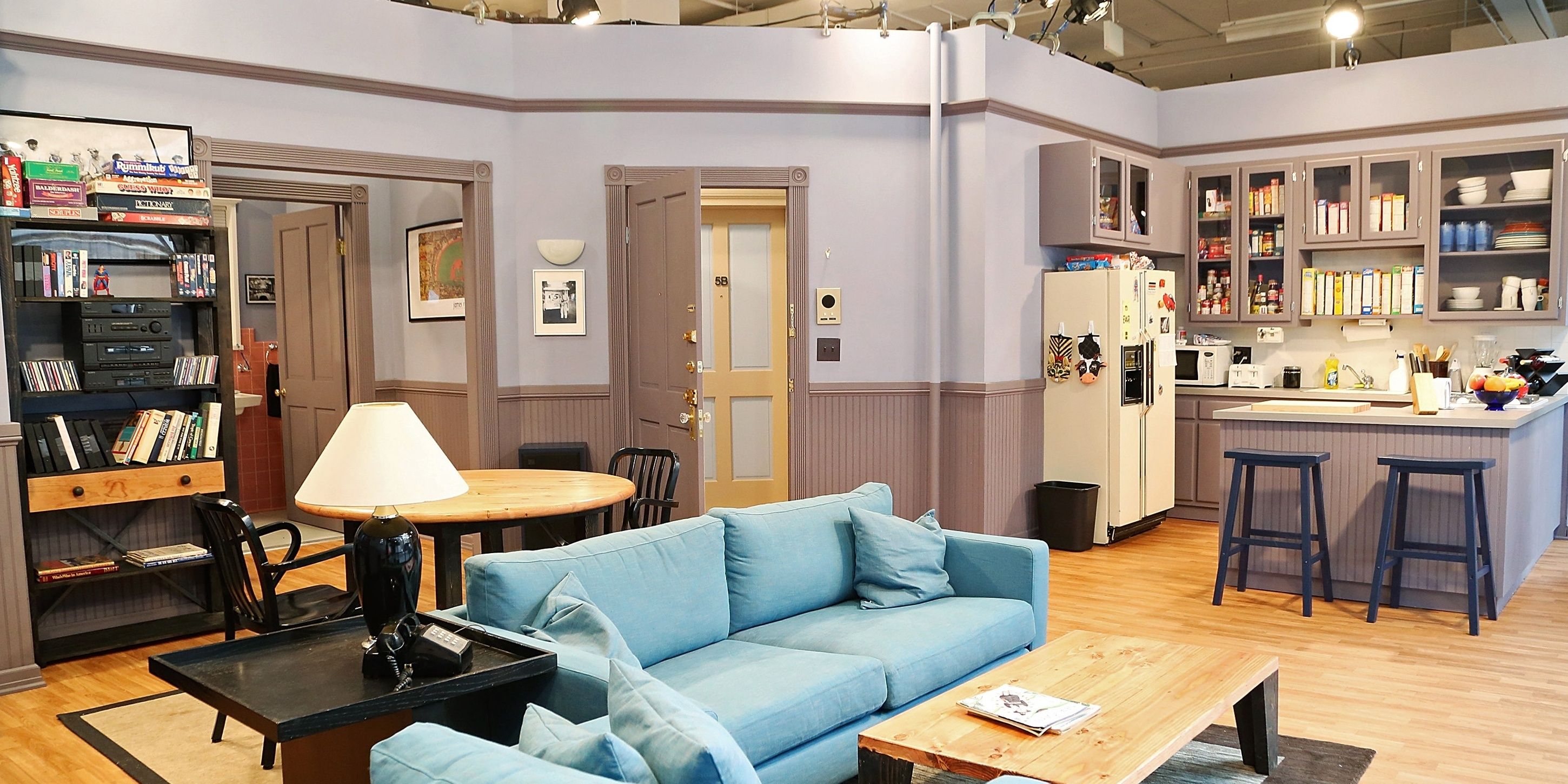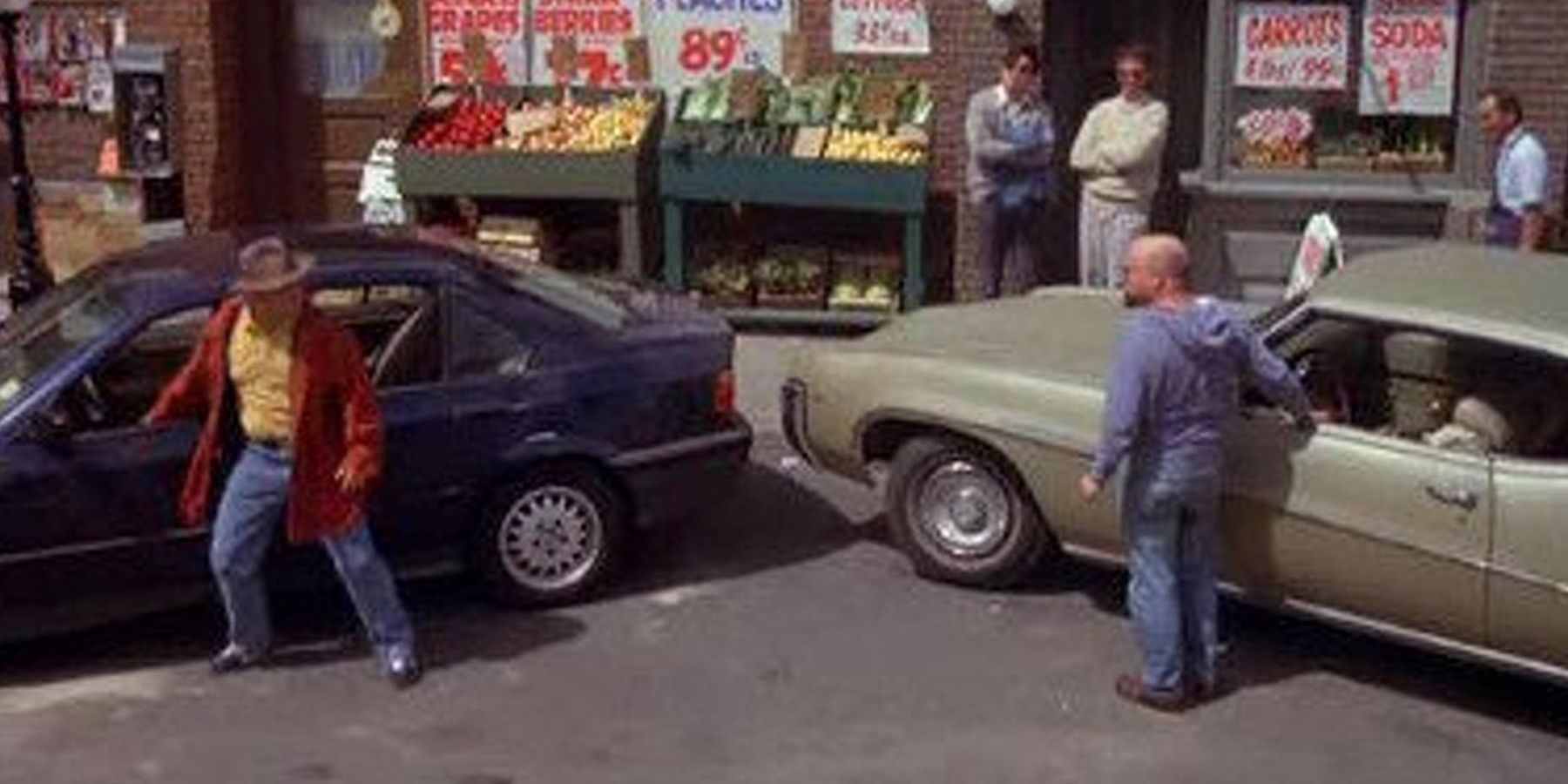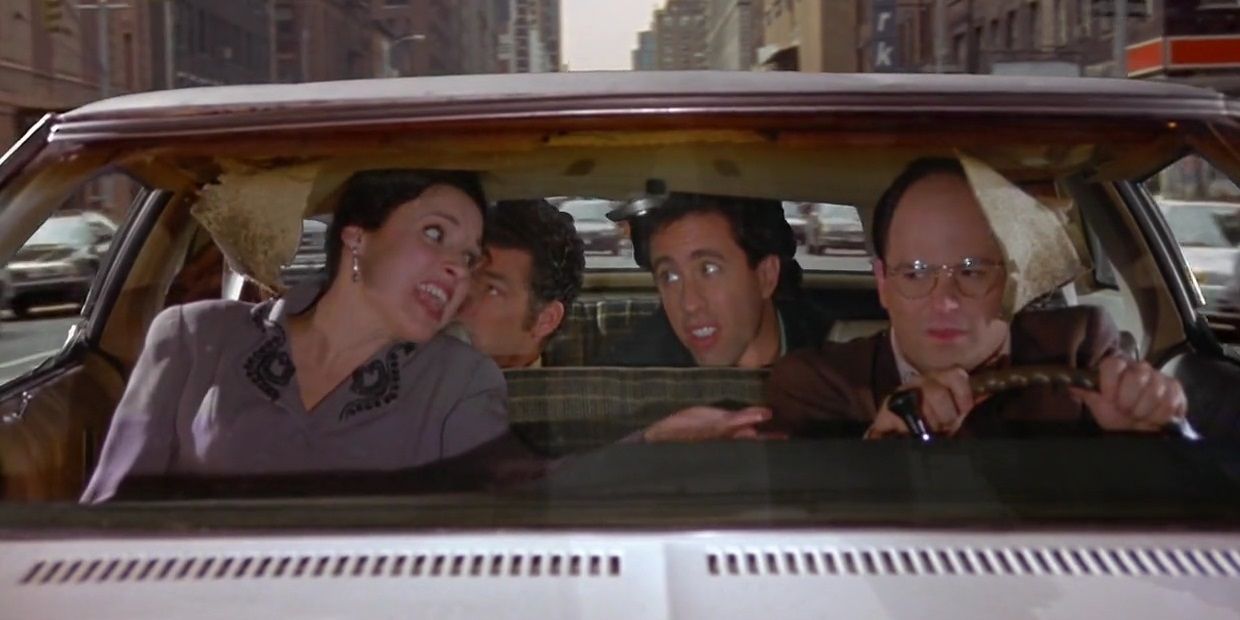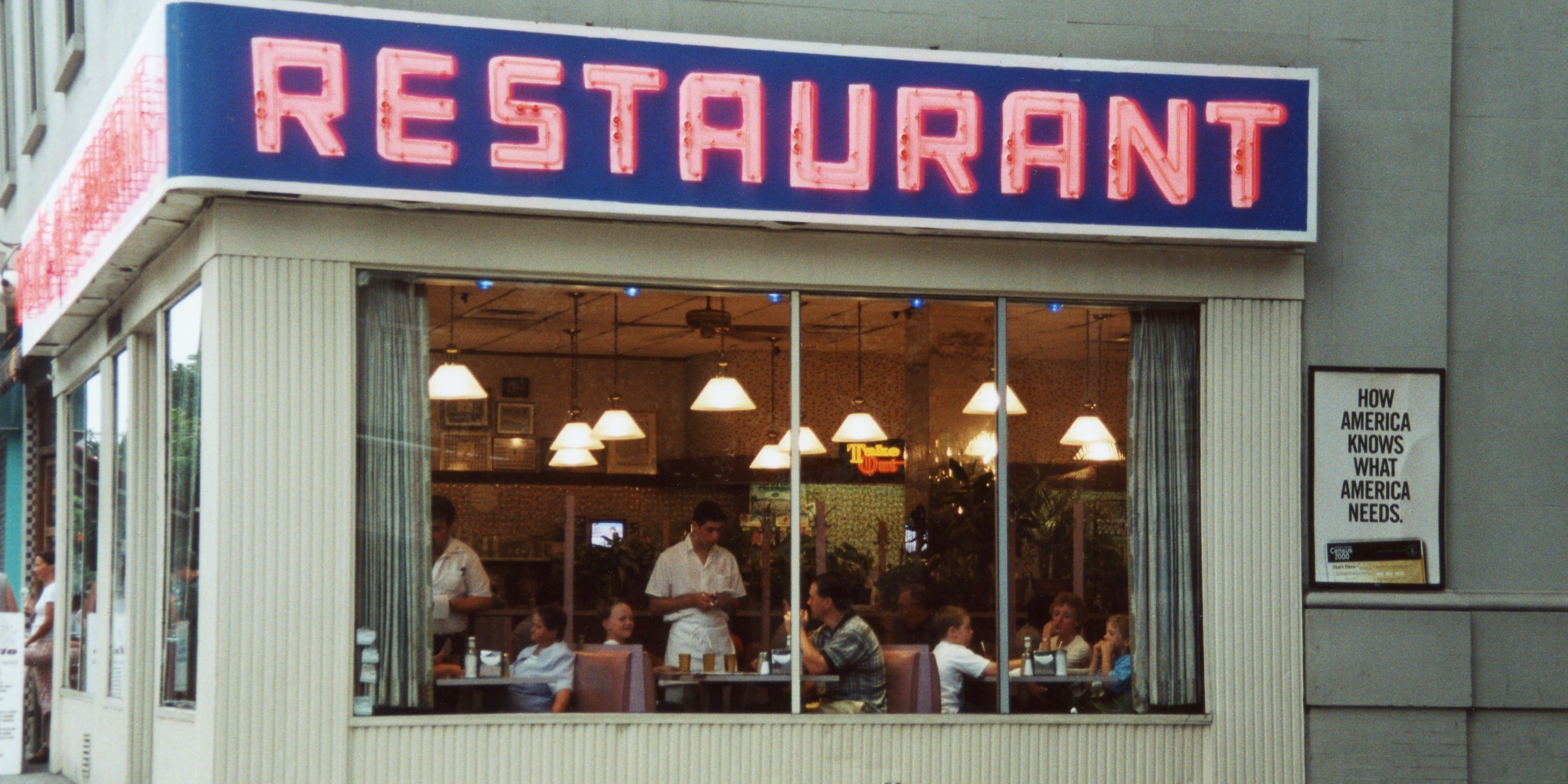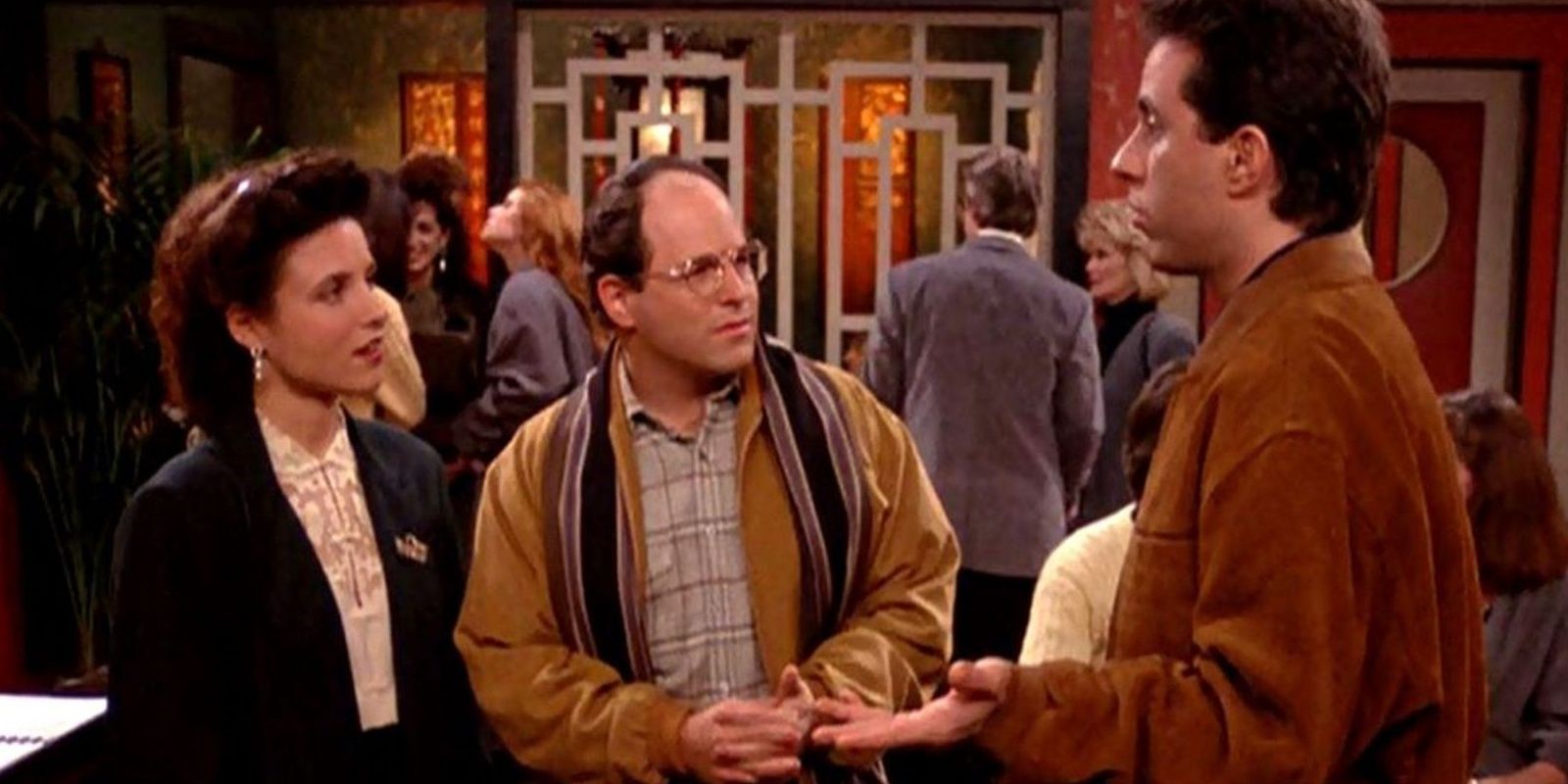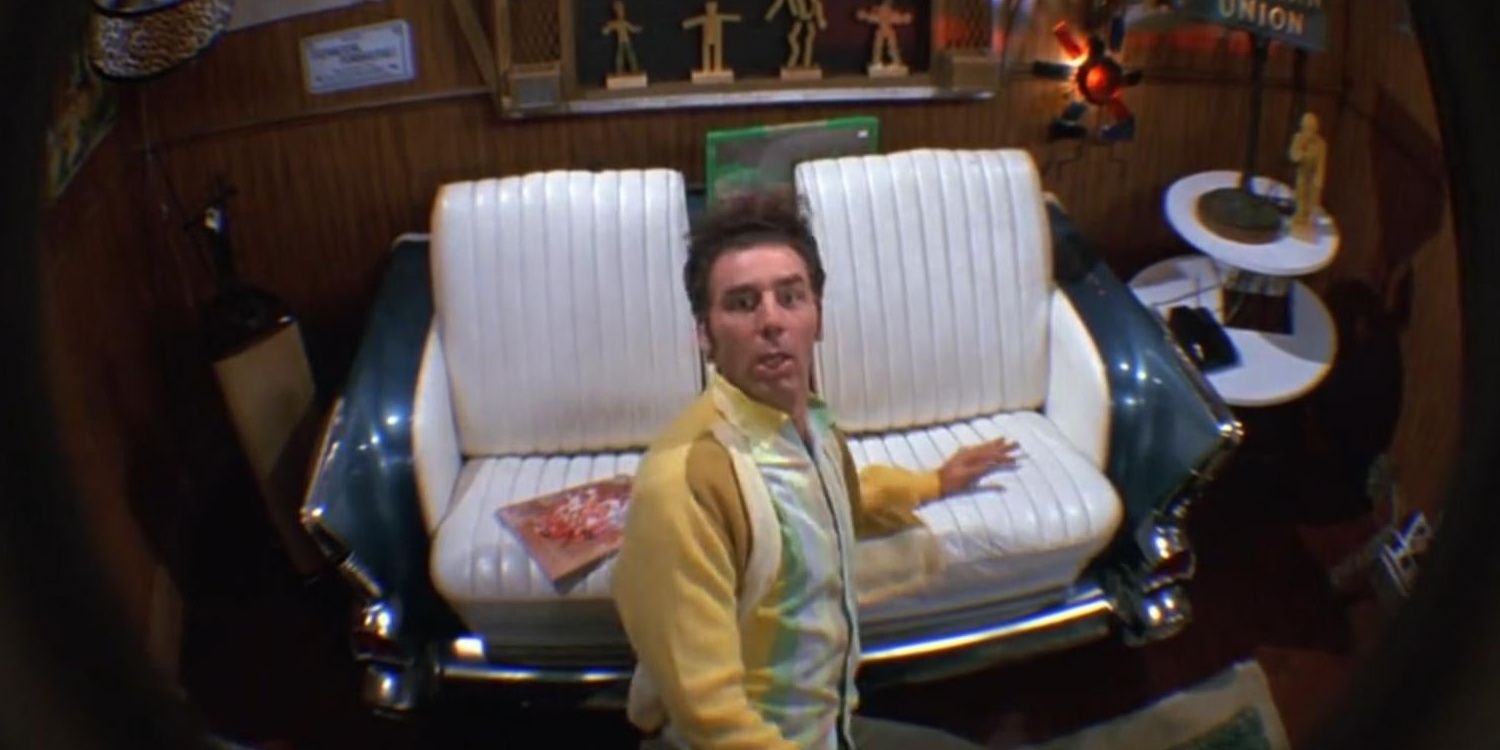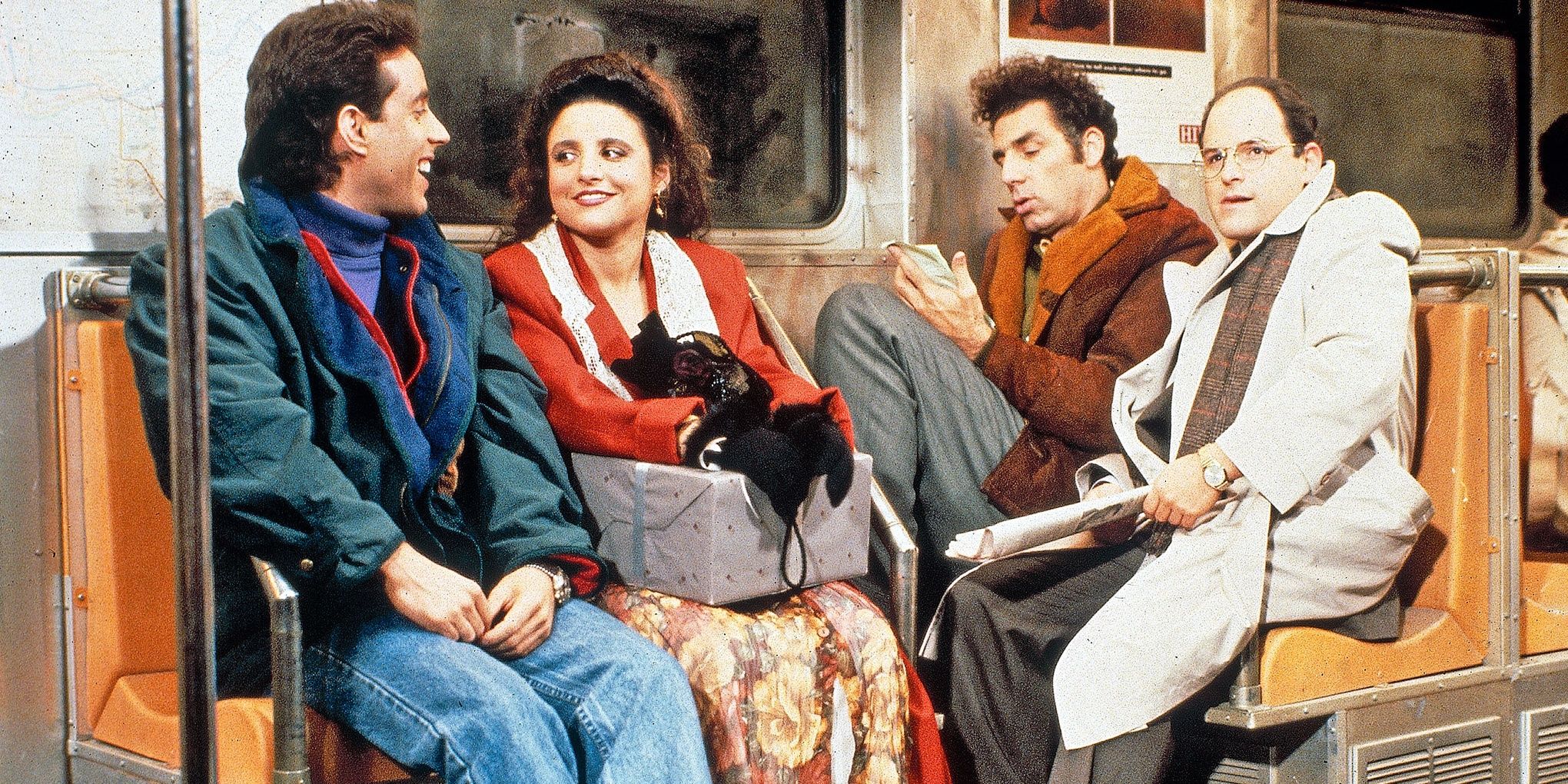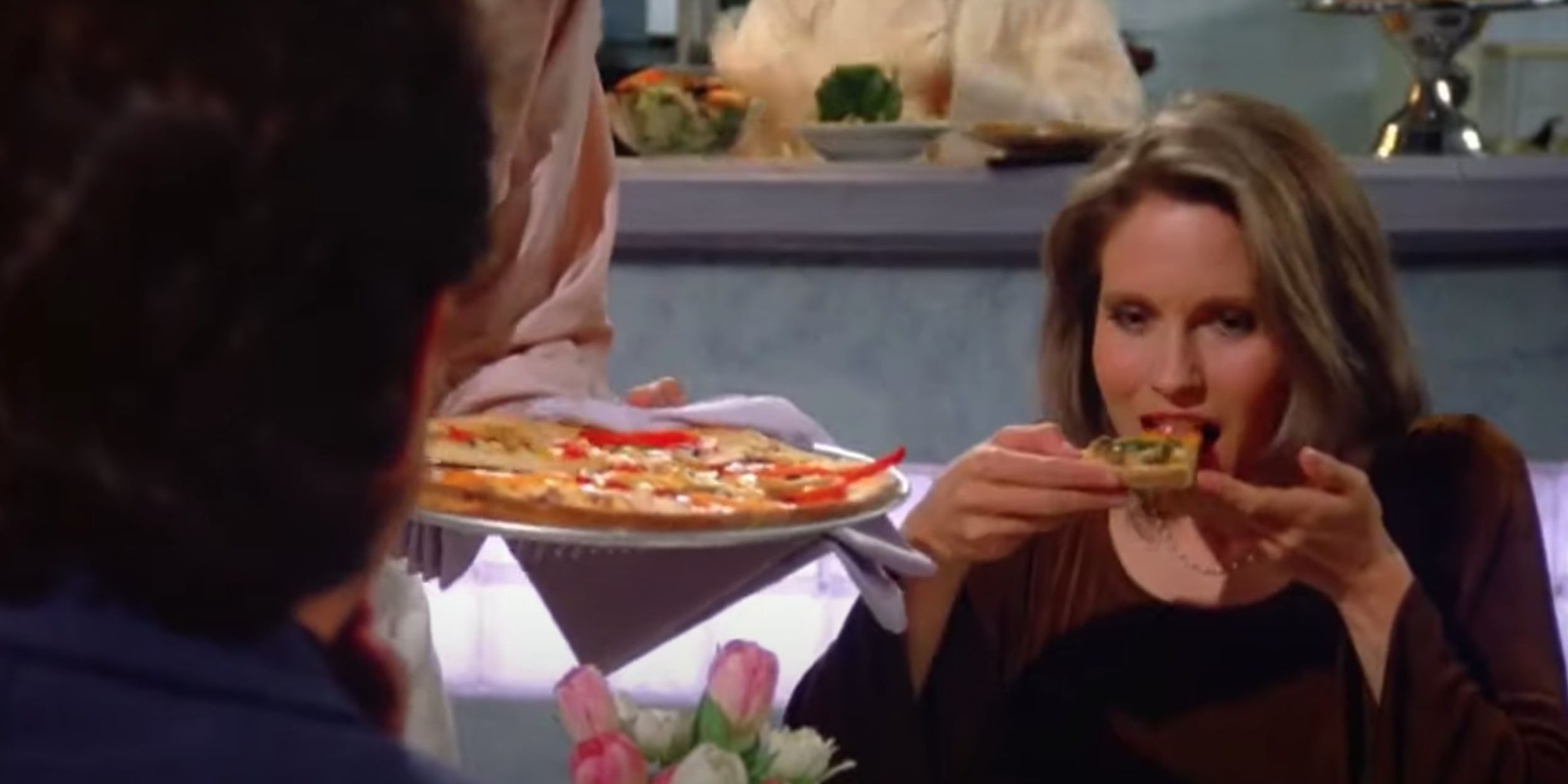Both co-creators of Seinfeld, Larry David and Jerry Seinfeld himself, are native New Yorkers. For years, Jerry worked the city's comedy clubs and Larry wrote comedy sketches for shows like Fridays and Saturday Night Live. Then, in 1989, the pair teamed up and created the greatest sitcom ever, which, decades later, remains a global phenomenon.
Almost all of Seinfeld's 180 episodes take place in Jerry and Larry's hometown of New York City. Despite the show's global popularity, much of the show's humor is derived from New York's unique culture and personality.
Got It Right: No-Nonsense Street Vendors
Many scenes in Seinfeld take place on the streets, where the gang often encounters hot dog vendors and newsstand owners. George has a tendency to try and make small talk with them, but, true to real life in New York, they're never interested.
In season 9's "The Wizard," George asks a hot dog vendor how much he likes hot dogs. He answers, "You gonna buy a hot dog or not?" Street vending in NYC is a constant hustle and vendors don't have time for chummy conversation.
Got It Wrong: The Apartments Are Huge
Apartments in New York City are small - so much so that people from outside the city can't fathom how New Yorkers can possibly live in such cramped quarters. The apartments in Seinfeld, however, are sprawling, spacious and full of natural light - all rarities in NYC.
Of course, Seinfeld was a multi-camera sitcom shot on Los Angeles sound stages, and so for practicality's sake, it made sense to build the apartment sets larger than what actual New York apartments would be. But actual New Yorkers can't help but notice the lack of reality in these living spaces.
Right: Parking Is A Hot Commodity
Seinfeld is full of references to parking spaces. Frank Costanza is reluctant to lend George his car because he has a "good spot" he doesn't want to give up. Newman is heartbroken when a judge forces him to park his car in a garage after he's found out as a scofflaw.
An entire episode is devoted to a dispute over a parking space, where George goes to parallel park and Jerry's friend tries to pull into the space, front-first. George was in the right this time - one rule of the road in NYC: no fronting-in!
Got It Wrong: Seinfeld's NYC Isn't A Melting Pot
New York City is a true melting pot. It's one of the most diverse cities in the world, full of people of all different colors and ethnic backgrounds. However, one wouldn't necessarily know this from watching Seinfeld. Almost all of the main characters and side characters are white, as are nearly all of Jerry and George's girlfriends and Elaine's boyfriends.
The show has often been denounced for its almost exclusively white cast - a valid criticism, especially considering its uniquely worldly locale.
Got It Right: Neighborhood Pride
NYC residents take great pride in the neighborhood in which they live and that's accurately represented in Seinfeld. The show takes place on the Upper West Side, which, at the time it aired, was a younger, artsier part of town. The Upper East Side, on the other hand, is a bit stodgier, older, and more culturally rigid.
This divide makes itself known when Kramer chastises Jerry with the following line: "If you don't want to be a part of society, Jerry, why don't you just get in your car and move to the East Side?!"
Wrong: The Characters Drive Everywhere
This is perhaps the biggest and most obvious error in Seinfeld's depiction of city life. Driving in New York City is extremely difficult and stressful - so much so that most New Yorkers don't even own cars. The ones that do own a car rarely use them, opting instead to either walk from place to place or travel via subway or taxi.
The characters in Seinfeld, however, use their cars as though they were living in the suburbs. This rings completely false to anyone who's lived in New York for any significant length of time.
Got It Right: It's Who You Know
The politics of restaurant seating is a fact of life in New York City. In certain restaurants, the difference between getting a table immediately and having to wait forever could very well come down to who you are and who you know.
This dynamic is realistically depicted in "The Chinese Restaurant," when the gang is waiting for a table, and "Mr. Cohen" walks in and is seated right away. When Jerry protests, the maitre d' explains to him that Mr. Cohen is "always here" and is a "very nice man" who "lives on Park Avenue."
Got It Wrong: Where Are The Roommates?
Elaine briefly has a roommate she can't stand and Jerry once tries to pull off the "roommate switch," an impossible feat of dating life. Other than that, the show contains almost no references to roommates. While it's true that rents weren't nearly as high in the 90s as they are now, some of these characters would still have needed roommates.
Kramer is chronically unemployed, and George is often strapped for cash. These two characters alone, in real life, would need to share their apartments with a roommate in order to make ends meet.
Got It Right: The Subways Are Always An Adventure
Nowadays, NYC subways are completely safe, and for the most part, relatively clean. However, this wasn't always the case. Seinfeld's subway episodes, while perhaps a bit over the top for comedy's sake, pretty much nailed the essence of the underground railway environment in the 90s.
From the oddball characters to the unforgiving slamming of the doors when people try to wiggle their way in, most New Yorkers would vouch for the overall accuracy of the show's subway scenes.
Got It Wrong: The Pizza Looks Terrible
New York is famous for its top-notch thin crust pizza. Most of the pizza featured in Seinfeld, however, is ridiculously subpar. At the end of "The Stranded," Jerry and George split a pie while recounting their brief stint in jail. The crust is thick and the cheese is almost raw. No pizzeria in their neighborhood would last a week with a product like that.
Even Poppy's more upscale pizza, which Jerry refuses to try for lack of trust in Poppy's personal hygiene, is undercooked, overly doughy, and nowhere near saucy enough. This is unrealistic, to put it mildly.

